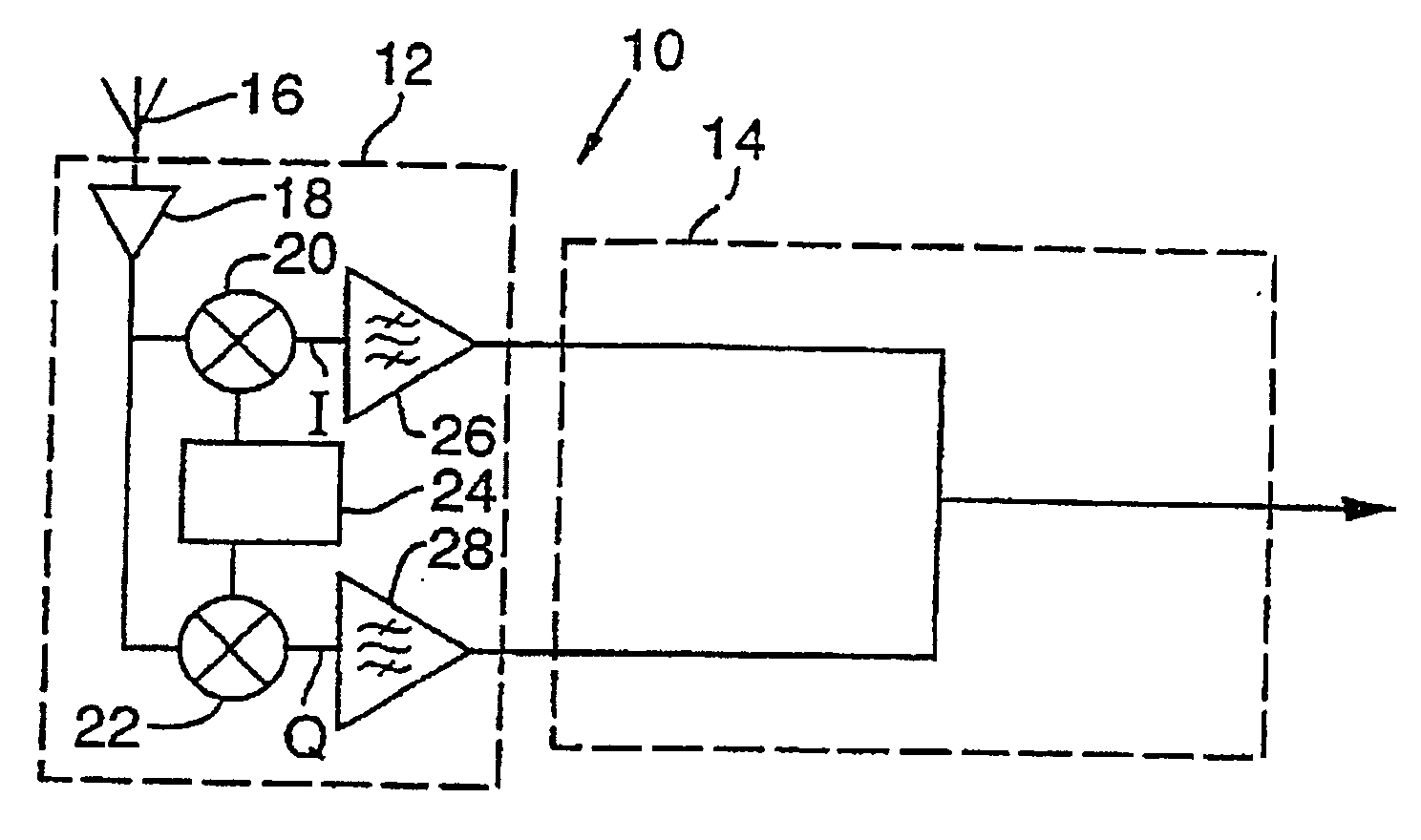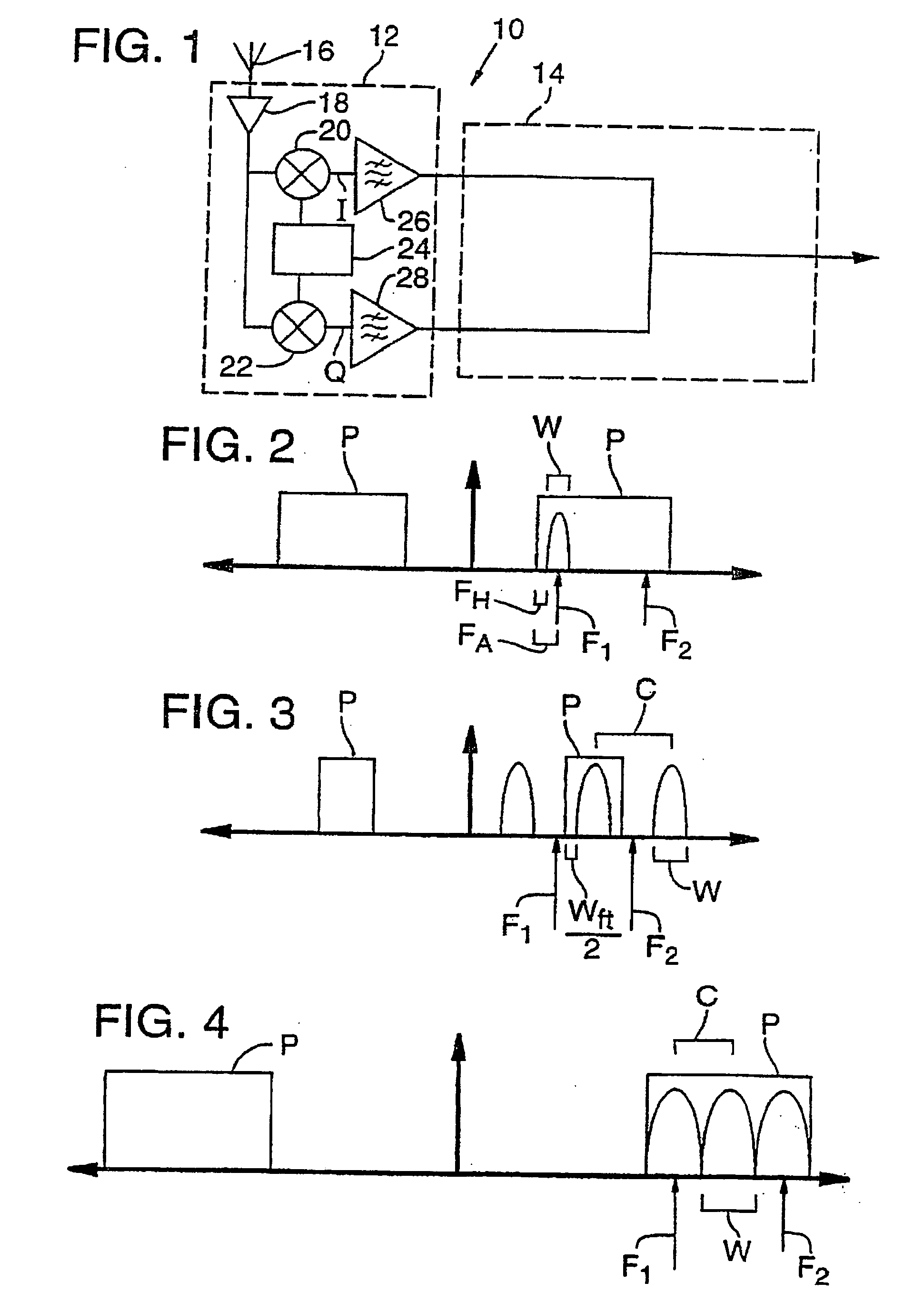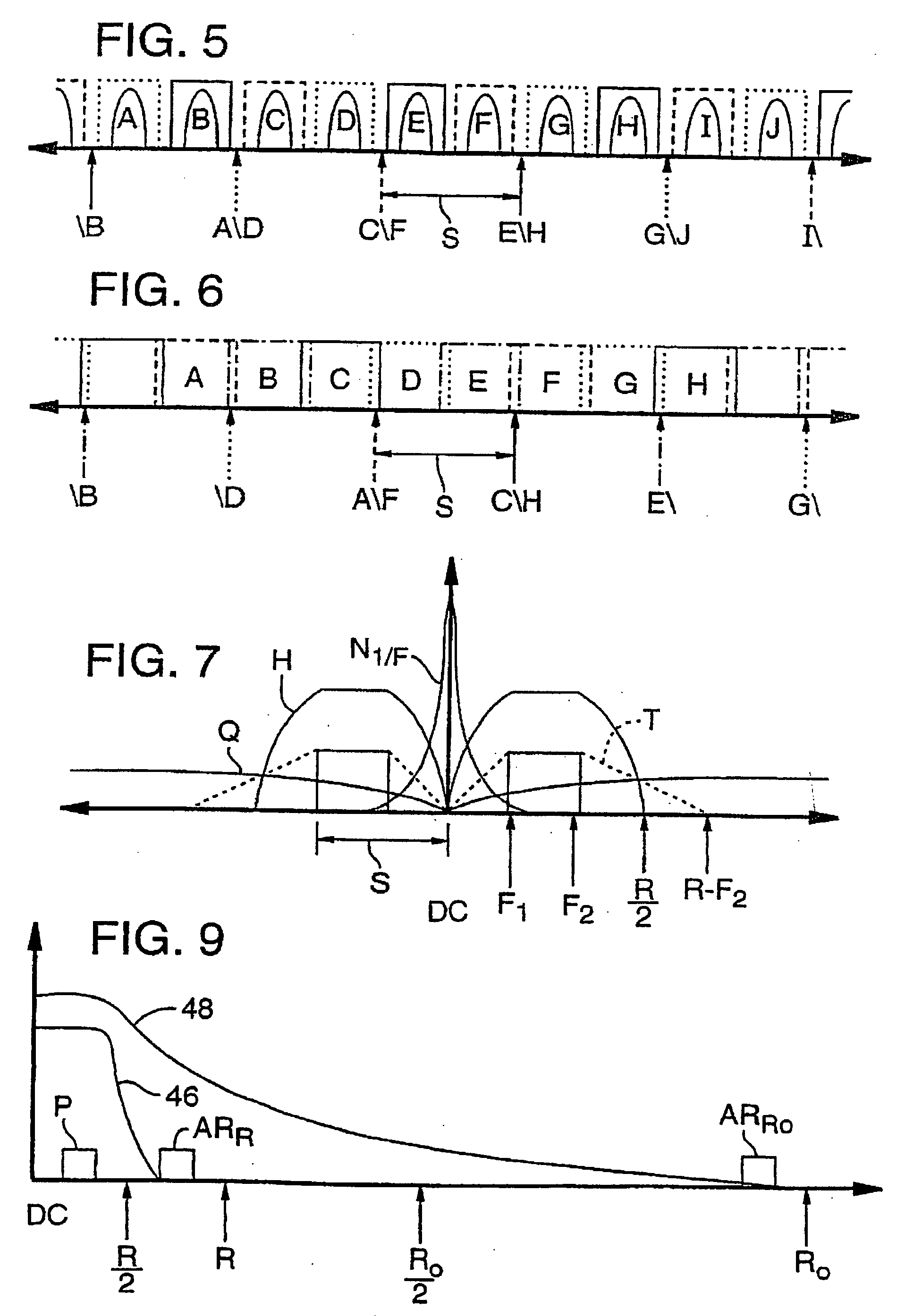Simplified high frequency tuner and tuning method
- Summary
- Abstract
- Description
- Claims
- Application Information
AI Technical Summary
Benefits of technology
Problems solved by technology
Method used
Image
Examples
Example
[0041] A significant aspect of the present invention is the basic division of functions between discrete-time (digital) and continuous-time (analog) components characteristic of the invention, which is described with reference to FIG. 1.
[0042] In FIG. 1, analog portion 12 of a device 10 according to the present invention receives an incoming signal from a preferably removable / exchangeable antenna 16. A suitable broad-band or tunable RF amplifier 18 then amplifies the signal. Alternatively, the invention could also be used to tune an intermediate frequency from previous analog processing, rather than an incoming signal directly from antenna 16 and amplifier 18.
[0043] The signal is then split into two signal paths and fed to first and second mixers 20, 22. The first and second mixers 20, 22 are supplied with a quadrature local oscillator signal from a preferably coarse-stepped local oscillator 24. The mixing operation translates to a near-baseband passband an upper high frequency sp...
PUM
 Login to View More
Login to View More Abstract
Description
Claims
Application Information
 Login to View More
Login to View More - R&D
- Intellectual Property
- Life Sciences
- Materials
- Tech Scout
- Unparalleled Data Quality
- Higher Quality Content
- 60% Fewer Hallucinations
Browse by: Latest US Patents, China's latest patents, Technical Efficacy Thesaurus, Application Domain, Technology Topic, Popular Technical Reports.
© 2025 PatSnap. All rights reserved.Legal|Privacy policy|Modern Slavery Act Transparency Statement|Sitemap|About US| Contact US: help@patsnap.com



